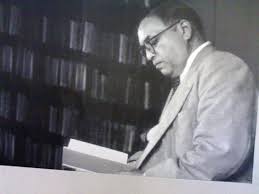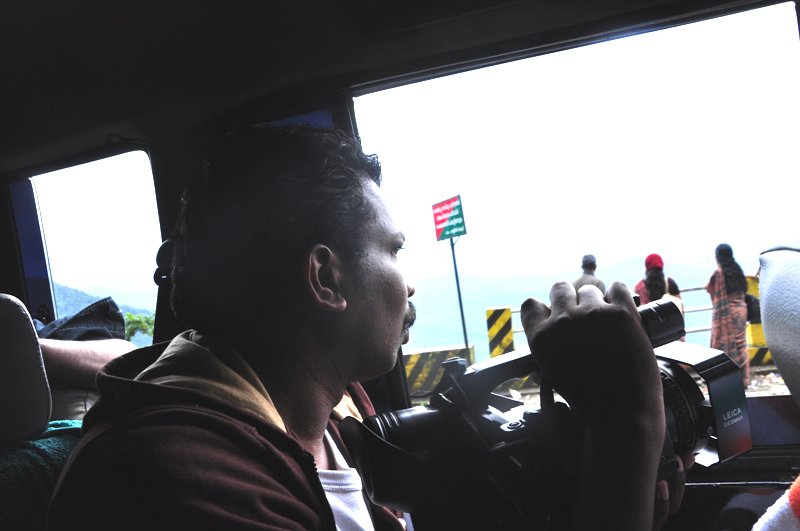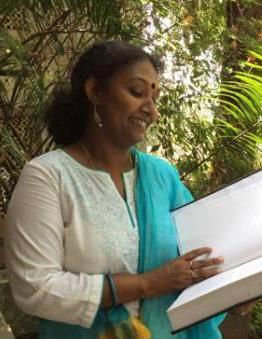Vishal Thakare
The recently concluded national conference of SC/ST entrepreneurs on ‘Dr. Ambedkar’s Thoughts and Ideas on Industrialization and Entrepreneurship’ poses many questions. The message given in the conference raises many concerns for dalits as to whether they should embrace its version of ‘Dalit capitalism’, what DICCI calls ‘Be Job Givers’, or continue their struggle for emancipatory ideals as advocated by Babasaheb Ambedkar and other organic Bahujan leaders. Does ‘Dalit Capitalism’ really enjoy legitimacy among larger dalit population or is it just an agenda driven by a few elites within dalits who enjoy disproportionate power and interest? This essay attempts to take an inquiry into dalit engagement with capital and assess its possibilities in the context of larger dalit welfare.
The emergence of Dalit engagement with the ‘capital’ has gained much attention over the last few years, especially when capitalism in India is gaining its momentum rapidly with the opening up of various opportunity structures, here economic, which were historically denied to dalits, both in the public and the private sphere. The question of rising dalit entrepreneurs has also been deliberated, contested in academia, media and several knowledge production spaces. But the question is whether the emergence of the dalit millionaire really reflects the current status or conditions of dalits, if it is so, then to what extent it has really transformed the lives of dalits and other underprivileged communities at large remains unexplained.
Dalit Capitalism and Some Questions
Proponents of ‘Dalit Capitalism’ argue that engagement with capital, or what they call ‘Dalit Capitalism’, will make dalits better off and increase their economic well-being and make them less dependent on upper castes for employment. It aims to emancipate them from the shackles of poverty and as wage labourers of upper castes and intends to prepare them to become potential capitalists who in turn will employ other dalits. And for this, there have been organised attempts by organisation like DICCI, Dalit Indian Chamber of Commerce and Industry on many fronts. This envisioned Dalit Capitalism conceptualized by a ‘few’ needs to answer a few questions. First, how this class consciousness of the dalit capitalist will replace ‘caste consciousness’ of the upper caste capitalist? Even if a dalit succeeds in accumulating capital, his relative positioning in the Indian society as ‘Dalit’ doesn’t change and he is still treated as Dalit, the only difference is it makes him a ‘Dalit Millionaire’. Second, would improvement in material assets or wealth of dalits ensure well-being of dalits in public life or society? Third, would it really contribute to larger welfare of entire dalit population or simply of a few people in the dalit community? How does it plan to engage with gender relations within dalit community? To find answers to these questions, it is necessary to understand capital and labour in relation to caste in India.
Caste and Labour
Labour is integral to the capitalist economy which cannot be imagined without it. Labour in the modern economy requires a specific set of skills and capacities to claim well paid white collar jobs and this white collar sector seems to be highly dominated and regulated by the so-called dominant castes in the social hierarchy of India. This embeddedness of social identities within the economic structures and institutions results in unequal and highly unjust outcomes and deprives opportunities and benefits to disadvantaged groups’ viz. dalits in the hierarchy. It is clearly visible among dalits because of denial of their entry in key opportunity structures and institutions aimed towards developing various capacities and highly skilled human capital producing higher productive outcomes, in the past. The present situation of Dalits in Indian economic scenario is a reflection of unevenness and highly skewed distribution of assets and means of production as a result of the caste system.
Babasaheb points out in Annihilation of Caste, “A man’s power is dependent upon 1) physical heredity 2) social inheritance or endowment in the form of parental care, education, accumulation of scientific knowledge, which enables individual to be more efficient than the savage, and finally 3) on his own efforts”.
It is important to note here that individual efforts come third and the first two factors become more important in order to be able to compete in the market. The fundamental principle of demand and supply in economics is violated in Indian labour market as the very process of human capital formation, through imparting necessary skills through education and providing access to spaces where the individual can enhance his skills, gets fractured in the Indian experience as a result of caste. In the socially hierarchical system based on caste in India, the functioning of the labour market is highly influenced by ascribed characteristics like caste, ethnicity, sex which play a critical role for acquiring essential skills like education, occupation or behavior patterns; this produces unequal market outcomes. Consequently, the assumption that market undermines identities is proven wrong and caste becomes crucial a determinant in the market in India.
Dalits occupy a different place in production chain and are found to be at the bottom of the ladder characterizing low productivity, survival activities etc. As a result, entrepreneurship for social mobility remains an unattained dream in India. Can dalit entrepreneurs who advocate capitalism find business opportunities with non-dalit business counterparts or would they just depend on their networks that are engaged in low value added production? Knowledge intensive production systems are dominated by upper castes and dalits serve only as wage labourers in these production structures.
Majority of dalits today continue to live on subsistence wages and are found working in informal labour market arrangements, both in the rural and urban areas. Skill difference between SC/ST employees leads them to doing unskilled jobs in construction and other high labour intensive industries as opposed to the higher castes who occupy skilled jobs at production sites. Their dependency for survival on upper castes is more visible in rural area and invisible in urban regions. Due to discrimination faced in labour markets and lack of necessary skills to enter into so-called white collar employment, dalits consider self-employment as a route to escape from poverty and see it as an alternative to wage employment. This leads them into setting up of small ventures such as pan patari shops, tea stalls etc.- petty enterprises or any self-employed activity which is unsustainable and risky in terms of job security. The sectorial pattern of businesses that dalits are involved in remains considerably unchanged with some exceptions and is driven by caste-gender configurations. Dalits association with traditional stigmatizing occupations (leather work) continues to exist, though it has declined, it exists in different forms.

The surplus produced with the help of laborers, a significant section of whom are dalits, accrues to the owners, mainly upper castes. Similarly, dalits who become capitalists by exploiting the labour power of their own caste mates, allowing them entry into a wealthier class, will be leaving their own people in the same labouring caste/class.
Market and Dalits
Market gives rise to spontaneous identities. Growing literature on market and discrimination imply that certain individuals or groups having particular characteristics based on race, caste, gender and sexual orientation are treated differently and are denied opportunities to contribute efficiently to production. The neo-classical school of economics views caste as a pre-modern social identity that discourages competition and believes the markets will undermine these stagnant identities which in turn will ensure equilibrium in the market.
The fundamental assumption that the market relies on is that every individual is ‘rational’ i.e. unbiased and without any prejudice while interacting or transacting with others and this enables equilibrium of highest level. Consider the application of this logic in India, where every individual carries his social identity such as caste first, and then identifies his counterparts consciously, based on ‘caste consciousness’, to transact business, in most cases. So the principle of rationality which forms the basis of market interactions is violated when it comes to productivity which does not reach its equilibrium, considered the marker of ideal functioning of any market.
Capital, Caste and Accumulation
Capital does not discriminate individuals along their identities; it is some individuals who (mostly from dominant groups in society), having accumulated capital over generations by exploiting labour and other means of production, that appropriate and acquire the dominant role in societies. Similar is the case with India, the Varna system enabled Vaishya community, commonly known as Baniya, with trading as their primary occupation, to govern the process of accumulation. While dalits were far away from this process of accumulation and were enslaved by these dominant castes for a long period of time.
It is the promulgation of the constitution and provision for elimination of untouchability that facilitated the dalits’ entry into opportunity structures (only political and social), and provided access to key spaces denied to them. This exposure to power structures and opportunity to experience it closely generated hope for accumulation among them, which was never the case for Babasaheb. He strongly believed in acquiring and consolidating political power which he considered first key to emancipate dalits from all forms of social odds. But after the Mahaparinirvan of Babasaheb, dalits failed to consolidate their political power and split into many groups which reduced their political significance at the national level. It also provided opportunity for other political parties to appropriate Babasaheb and to assimilate dalits for narrow political gains.
The access to capital for dalits is multi-layered and exclusionary in its nature. Dalits are largely dependent on various social assistance programmes of the government. For this assistance they are required to open accounts in banks now, and this is being portrayed as dalits’ access to capital having improved.
The additional layer of exclusion becomes evident when the dalit formally approaches these financial institutions to set up a business or an industrial venture and expresses his wish to start production with a view to generate surplus. These institutions are dominated by upper castes and perceive dalits as incapable of doing business. They even go to the extent of demoralizing the budding entrepreneur and create multiple constraints for the dalit person to access credit. In contrast, upper castes enjoy privileged social or business networks which are established over a long period of time and thus easily access the capital required in pursuit of surplus.
These institutions contribute in spreading ‘learned helplessness’ in the words of Elmslie and Sedo, which potentially decreases the learning ability of an individual in the event of discrimination by his or her peers. As a result of this, dalits tend to remain behind, both at the group level and the individual level, which in turn diminishes human capital, constrains effort. This cumulative disadvantage produced through several processes of exclusion forces dalits into further marginalisation and discourages their desire to become a part of the system.
Can this be a Possible Solution?
The defense of dalit capitalism rests on viewing dalits as employers not employees – this is based on the assumption that it will provide equal opportunities and space for prosperity for dalits. Capitalism by its nature tends to undermine efforts to address the larger social question of equal access to market and non-market systems. It systematically sets the rules of social relations between different groups in society and reproduces hierarchy based on material wealth. This system primarily focuses on individual gains and privileges the notion of ‘private’ at the cost of larger social gains.
As Gopal Guru rightly puts it, “Prescription of capitalism as the ideal social order seriously and continuously misleads people into ignoring the inconsistency between the new truth (Dalit millionaires) and the ontological truth that reflects perpetuation and deepening of wretchedness among dalits”.
Endorsement of the capitalist system can be a great risk for a majority of dalits and it has bigger costs than benefits for the larger dalit community. Social democracy must be a precondition for capitalism to exist. In the absence of social democracy, imagining ‘Dalit capitalism’ would mean compromising on larger struggles for social emancipation initiated by our great leaders.
~
References
Deshpande A, Sharma S (2013): Entrepreneurship or Survival? Caste and Gender of Small Business in India, working paper, Delhi School of Economics
Guru Gopal (2012): “The rise of Dalit Millionaire’ A Low Intensity Spectacle”, Economic & Political Weekly
Basu Kaushik (2015): ‘Discrimination as coordination device; Markets and Emergence of Identity‘, Policy Research Working Paper, World Bank
(2013) Inclusion Matters, World Bank Report, Washington
~~~
Vishal Thakare is pursuing Masters in Germany at Berlin School of Economics. Earlier, he had done his MA in Development Studies from TISS and was trained in economics and politics in graduation. His research interests are identity and economics, social exclusion and institutions, labour market and industrial relations.
Cartoon by Unnamati Syama Sundar.









